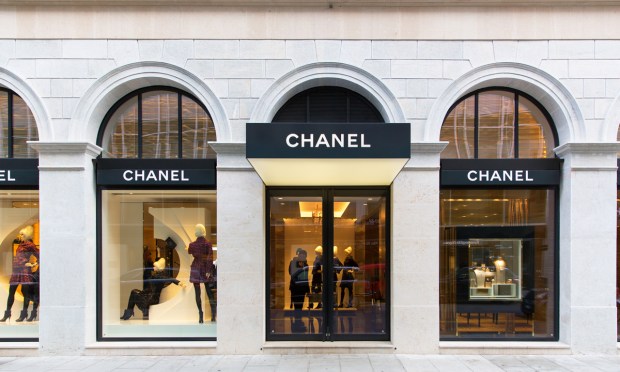Chanel Signs Largest Retail Lease Agreement Since the Pandemic in Hong Kong

Chanel has signed one of the largest lease agreements since the onset of the pandemic — a prominent retail space in the bustling shopping district of Causeway Bay in Hong Kong.
The rented shop spans two floors, emphasizing Chanel’s commitment to maintaining a strong presence in the thriving retail market. And according to government records, the luxury brand has entered into a three-year lease agreement for a prime ground-level retail space at Capitol Centre, commencing in mid-May. While the exact rental amount was not disclosed in the records, it was reported by Ming Pao that Chanel has committed to paying over HK$3 million ($383,000) per month for the space.
Situated directly in front of a subway station exit, the leased space is boasts a sizable facade in what was once regarded as the world’s most expensive shopping street.
Prior to its vacancy during the pandemic, the shop had been rented by Forever 21 and Victoria’s Secret.
Why Chanel Is Doubling Down on China
Following the easing of travel restrictions earlier this year, Hong Kong has experienced a resurgence in tourism. According to the Hong Kong Tourism Board, the number of visitors has surged from under a million in January to nearly 3 million in April.
PYMNTS reported in April that China was seeing a sharp uptick in post-COVID travel and consumer activity, citing information from local media, and the government reported a staggering 19.7 million rail trips on Saturday, April 29, the commencement of the country’s five-day Labor Day holiday.
Simultaneously it was noted that retail and catering sales rose 21% compared to the previous year. Food chains reported a 37% revenue increase, while clothing sales rose 21%. Sales of jewelry, cigarettes, and alcohol climbed 17%.
Read more: China Seeks Spike in Travel and Shopping Following Pandemic
During the first quarter, the city witnessed a surge in insurance sales to visitors from mainland China, increasing nearly 28-fold. The growth amounted to about 75% of the level recorded in the corresponding three months of 2019.
Alongside the rise in visitor numbers, rental prices in Causeway Bay have declined as a result of protests and the pandemic. Consequently, Chanel is anticipated to pay significantly lower rent compared to previous tenants. According to Colliers International, rental rates in Causeway Bay as of March were only 30% of the peak levels of a decade ago.
While global luxury brands have redirected their focus and resources away from Hong Kong, anticipating a rise in domestic shopping by Chinese consumers, the steep discounts in the city’s real estate market present a chance to secure shopfronts in the world’s most expensive retail market.
Furthermore, the luxury label has also seen a slowdown in the U.S. sales. In late May the Financial Times (FT) reported that Chanel, after about 10% growth in 2022, shifted to “single digits” for the current year.
“We had a softening in the U.S., so no different from some of our competitors, from November of 2022, and that’s continued over the first few months of 2023,” Chanel Global Chief Financial Officer Philippe Blondiaux told the FT.
Blondiaux’s comments came during a week in which investors were concerned about the luxury sector’s outlook in the U.S., leading to a decline in the stocks of some companies within the sector. According to the report, LVMH fell 6.8%, Kering 6.8%, and Hermès 4.3%.
However, at the time, Blondiaux said Chanel remained confident in the outlook for the year and through 2025, per the report.
Chanel soon saw double-digit growth in China after the relaxation of COVID restrictions and an increase in sales to Chinese customers across various countries due to the resurgence of Chinese tourism.
Similarly, LVMH, a major player in the luxury industry, revealed in April that a 17% increase in sales during the first quarter was partially credited to a revival in shopping among Chinese consumers.
Kering, on the other hand, reported a varied performance in the first quarter. While the company revenue rose 2% overall, with growth in Western Europe and the Asia-Pacific region, there was a decline in revenue in North America.

